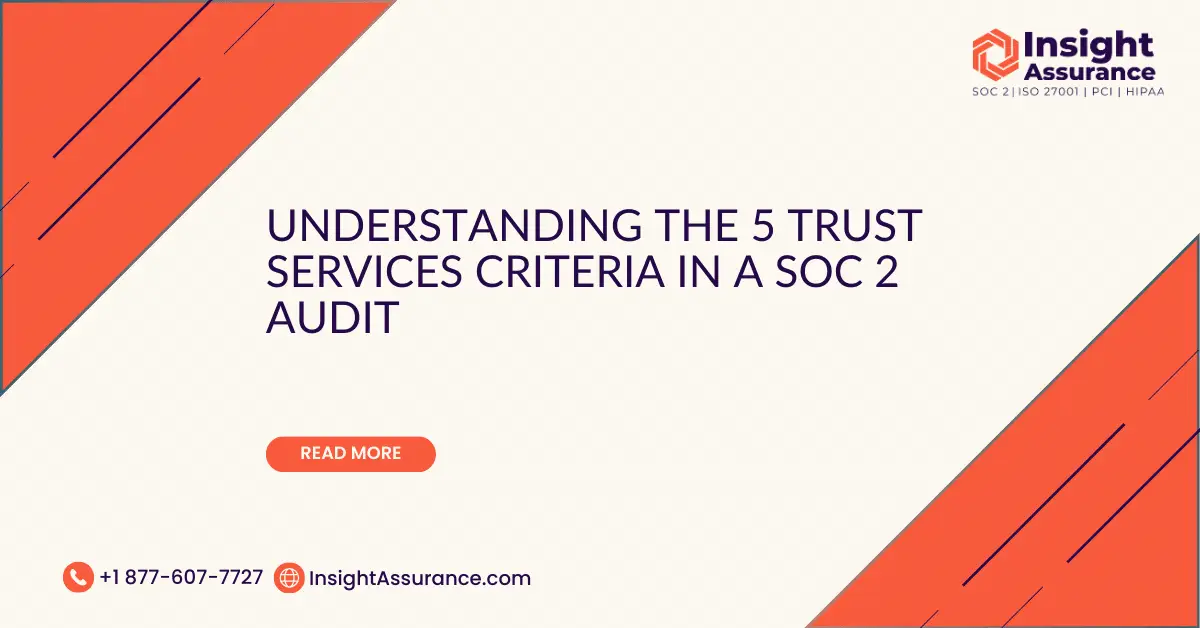Data security and privacy have recently escalated from technical concerns to boardroom priorities. As businesses increasingly rely on cloud services and third-party vendors to manage and store sensitive data, the need for rigorous security standards has never been more critical.
Enter the SOC 2 reporting framework, a voluntary reporting framework based on control criteria developed by the American Institute of Certified Public Accountants’ (AICPA) assurance services executive committee for service organizations. SOC 2 trust service principles provide a standardized framework for evaluating the design and operating effectiveness of security controls across a service organization’s systems. These criteria help assess how well an entity protects customer data in areas such as security, availability, processing integrity, confidentiality, and privacy, ensuring sensitive information is handled in line with industry expectations and compliance requirements.
Understanding these criteria, collectively known as the trust services criteria, is not just about ticking boxes for compliance; it’s about building a foundation of trust with customers, enhancing operational controls, and safeguarding the reputation of your business in a landscape fraught with cyber threats. This blog post aims to demystify the five trust services categories, providing you with the knowledge you need to navigate the complexities of a SOC 2 audit and why it’s a critical step for any service organization committed to data protection and privacy.
The Five Trust Services Categories
Each category is meticulously designed to target specific organizational objectives, offering a holistic approach to evaluating and reporting on information and systems.
Category #1: Security
The Security category includes criteria related to protecting information and systems from unauthorized access, disclosure, and damage that could compromise availability, integrity, confidentiality, or privacy. It includes safeguarding data throughout its lifecycle—from creation and use to transmission and storage—and securing systems that handle electronic information. Security controls help prevent or detect system failures, processing errors, unauthorized access, misuse, and data breaches, all of which support the organization’s ability to meet its objectives.
In practice, this requires the implementation of robust security controls, including firewalls, intrusion detection systems, and access control mechanisms that enforce the principle of least privilege. Encryption, system monitoring, and segregation of duties further strengthen security compliance, helping prevent breaches and maintain the integrity, availability, and confidentiality of information systems. A well-defined security program not only reduces risk but also builds trust with customers, business partners, and regulators.
Category #2: Availability
Criteria within the Availability category refer to ensuring that information and systems are accessible and operational as needed to support an entity’s objectives. The Availability category emphasizes the importance of keeping data and services available for internal operations and for customer use, helping maintain business continuity and service reliability. Availability focuses on the readiness and uptime of systems rather than how they function or how easily users can interact with them.
While the criteria within the Availability category do not define minimum performance standards or usability requirements, they do require that systems have appropriate controls in place to support operational access, ongoing monitoring, and maintenance. These controls help prevent or minimize downtime and ensure the organization can continue to deliver its services and meet its commitments effectively.
Category #3: Processing Integrity
The Processing Integrity category includes criteria seeking to ensure that system processing is complete, valid, accurate, timely, and authorized in order to support the organizational objectives. It focuses on whether systems function as intended—without errors, delays, omissions, or unauthorized actions—and whether they reliably achieve their designated purpose. The Processing Integrity category includes criteria to help ensure that outputs are trustworthy and that system operations align with business goals.
Given the complexity and number of systems within an organization, processing integrity is typically evaluated at the individual system or functional level. In contexts such as a SOC for Supply Chain examination, this means verifying that the systems used to produce, manufacture, or distribute goods operate correctly and consistently deliver products that meet defined specifications. Ultimately, processing integrity supports operational reliability and customer satisfaction by ensuring dependable system performance.
Category #4: Confidentiality
The Confidentiality category involves criteria that refer to the protection of information specifically designated as confidential, ensuring it is only accessible, used, and disclosed in accordance with management’s objectives. This protection extends from the point of data collection or creation through to its final disposition or removal from the entity’s control. Confidential information may include proprietary data, trade secrets, or any other sensitive content that must be restricted to specific individuals or entities, as outlined in legal, regulatory, or contractual obligations.
The Confidentiality category is distinct from the Privacy category (below) in that privacy criteria specifically relate to the handling of personal information—data that identifies or can be used to identify individuals. Whereas confidentiality criteria apply to a broader range of sensitive information (including personal data), the privacy criteria encompass specific principles around how personal information is collected, used, retained, disclosed, and disposed of. In essence, confidentiality is about protecting sensitive information regardless of its type, while privacy focuses exclusively on the responsible management of personal data in accordance with legal and ethical standards.
Category #5: Privacy
Criteria within the Privacy category refer to the entity’s responsibility to manage personal information in a way that aligns with its stated objectives and applicable privacy principles. Unlike confidentiality, which applies to all types of sensitive information, privacy is specifically concerned with personal data—information that can identify or be linked to individuals. Privacy practices ensure that personal information is collected, used, retained, disclosed, and ultimately disposed of in a controlled and transparent manner that reflects the entity’s commitments to individuals and complies with legal or regulatory requirements.
The privacy criteria are structured around key principles that guide how personal information is handled. These include providing notice to data subjects about privacy-related objectives, offering choice and consent regarding how their data is used, and ensuring that the collection of personal data is appropriate and necessary. It also includes controls over the use, retention, and disposal of data, allowing individuals access to review and correct their personal information. Additionally, the entity must manage disclosures with proper consent and provide notifications in the event of data breaches or incidents affecting privacy.
Other essential aspects of privacy include maintaining data quality to ensure personal information is accurate, complete, and relevant, and implementing monitoring and enforcement mechanisms to assess compliance. These efforts help address inquiries, resolve complaints, and manage disputes related to privacy concerns. Collectively, these criteria support the entity’s ability to demonstrate accountability, foster trust with stakeholders, and meet both ethical and regulatory expectations for managing personal data.
Evaluating Digital Security With a SOC 2 Audit
The SOC 2 reporting framework and associated criteria with the five trust services categories, provides organizations with the opportunity to demonstrate their effectiveness to defend against cyber threats and bolsters its reputation by showcasing a solid commitment to data protection. By aligning these criteria with specific business needs, companies can devise a security strategy that effectively counters unique vulnerabilities and challenges.
Related Reading: What To Look for When Choosing a SOC 2 Compliance Auditor
Empowering Business Growth Through Compliance
The adoption of organizational controls that demonstrate alignment to and achievement of the SOC 2 trust services criteria sets the stage for business expansion, meeting the compliance expectations of clients and partners while nurturing a culture of trust and dependability. A strategic approach to compliance not only marks businesses as data security leaders but also promotes a mindset of continual improvement. Whether focusing on security controls or confidentiality practices, this commitment supports your overall service organization objectives and fosters a more resilient and robust business model in the competitive digital landscape.
Whether you’re undergoing your initial SOC 2 examination or reinforcing your compliance posture through techniques like penetration testing and internal audit reviews, a system of continual controls evaluation and improvement leads to ongoing efficiencies. By integrating these steps, organizations can confidently position themselves as trustworthy partners, fully prepared for a SOC 2 compliance journey.
Need help getting up to speed with SOC 2 Examinations and the trust services criteria? Contact us to explore how we can tailor our services to meet your unique industry needs and help your organization meet and exceed a SOC 2 audit.

